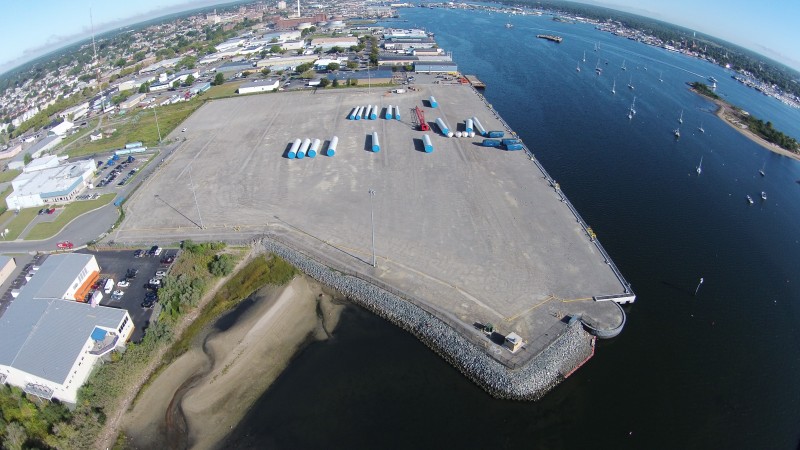The U.S. East Coast is the world’s most promising market for offshore wind energy, but its ports have limitations and will need to be used together by the nascent industry.
That was the assessment of experts at the International Partnering Forum 2019, a major wind energy conference hosted by the Business Network for Offshore Wind that attracted 1,400 people from offshore wind developers and associated industries to New York City last week.
“There’s not a Bremenhaven in the U.S.,” said Jay A. Borkland, a senior engineering manager for Lloyd’s Register, referring to the German port and hub of the North Sea offshore wind industry.
Borkland, who teaches marine and environmental engineering at Tufts University, was part of a team that studied the European industry and what lessons it had for turning New Bedford, Mass., into a wind energy port.
“We came to realize that the level and skill used in Europe was extraordinary,” Borkland said in an interview with WorkBoat. “The U.S. didn’t have the footprint available.
“What’s important to attract chain is to at least have the assembly here,” said Borkland. That will mean using a network of locations — ports that are suited for phases of building out offshore wind arrays, and working with them in sequence.
In the U.S., “what’s beginning to develop is developers are finding their first-, second- and third-choice locations,” said Borkland.
With the first major project in federal waters, Vineyard Wind off southern New England on track to begin construction in 2020, port operators at the conference pitched their locations.
There was New York City and its South Brooklyn Marine Terminal, with almost 64 acres and 6,400 linear feet of waterfront available for staging wind turbine components.
From 140 miles north up the Hudson River, the Carver Companies had come to the city to tout their Port of Coeymans, a marine terminal that already serves as an assembly point for major power plant components, built there and barged to their destinations in crowded urban locations.
In Massachusetts, building the New Bedford Marine Commerce Terminal did double duty of removing and isolating polluted sediment form the harbor, using the fill to build a 21-acre hardened site to handle the huge weight of turbine components.
But even it is not big enough. Next door in Rhode Island, state officials are pitching their port facilities at the former Navy base at Quonset Point in North Kingstown — the support base for Deepwater Wind's Block Island Wind Farm — and at the Port of Providence.
“We have enough to get started,” said Stefan Pryor, the state secretary of commerce, who says expansion plans at both sites aim to make Rhode Island “the lighthouse state” for how to build shoreside support for the wind industry.
Other industry observers say states need to work at cooperation, and less at the beauty contest of trying to attract the biggest commitments they can from wind developers.
There will be a tendency to overdesign ports around the first projects, said Tim Sullivan, CEO of the New Jersey Economic Development Authority. Sullivan said port planners need to keep their facilities “project-agnostic” and adaptable to future demands — likely to include much bigger and heavier equipment, with the industry shooting to acquire 12-megawatt turbines in the 2020s.
In Europe, “we collaborate with other ports. The people installing wind farms like to spread their risk,” said Erik Bertholet, business manager for logistics and offshore wind with Groningen Seaports, which operates the Netherlands wind hub Eemshaven. Around a third of all the energy that is produced in the Netherlands comes from Eemshaven.
“It’s not competitive, it’s cooperation, because you want dependable logistics,” said Bertholet.
In the U.S., “we will have a series of smaller facilities tied together by a logistics chain,” said Borkland. “A distributed network of ports, and we will need cooperation between the states.”




